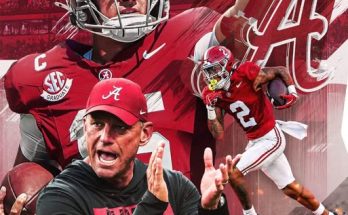]]Mack Brown stopped by to see the Texas Longhorns just ahead of the season kickoff, wanting a closer look at the team he once led to a national championship. The legendary coach, now at North Carolina, was in town for a brief visit, and his presence alone stirred nostalgia among fans and players alike. Brown’s tenure at Texas from 1998 to 2013 was marked by success, including the unforgettable 2005 BCS National Championship victory over USC—a game still regarded as one of the greatest in college football history. His return, even if only for a short while, was a reminder of the program’s storied past and the expectations that still loom large over the current squad.
As Brown walked through the facilities, he exchanged greetings with familiar faces—staff members who had been part of his coaching era and new personnel who recognized him instantly. The players, many of whom were just kids when Brown last coached the Longhorns, watched with quiet admiration. For them, his visit was more than just a casual drop-in; it was a connection to Texas football’s golden years. Current head coach Steve Sarkisian welcomed Brown warmly, understanding the significance of his presence. Sarkisian, now in his third year at Texas, is under pressure to return the program to national prominence, and having a mentor like Brown offer his insights—even informally—could prove invaluable.
Brown’s visit wasn’t just a sentimental journey. Known for his keen eye for talent and team dynamics, he took the opportunity to observe practice, watching quarterback Quinn Ewers and the revamped offensive line. Ewers, the highly touted transfer from Ohio State, is seen as the key to Texas’ resurgence this season. Brown, who coached Vince Young and Colt McCoy—two of the greatest quarterbacks in Longhorns history—understands better than most what it takes to lead a team at the highest level. His quiet assessment of Ewers’ footwork, decision-making, and leadership could carry weight, even if his feedback was given in passing.
Beyond the quarterback position, Brown’s gaze lingered on the defense, particularly the secondary, which has been a point of concern in recent seasons. Texas’ ability to stop explosive plays will be critical in the tough Big 12 conference, now more competitive than ever with new additions like BYU, Cincinnati, Houston, and UCF. Brown’s defensive coordinators at Texas were known for their aggressive schemes, and while he no longer has an official role with the team, his observations might have sparked discussions among Sarkisian’s staff.
The timing of Brown’s visit was also noteworthy. The Longhorns are entering a pivotal season—one that could define Sarkisian’s tenure. After a disappointing 5-7 record in 2021, Texas improved to 8-5 last year, showing flashes of potential but also inconsistency. With the program set to move to the SEC in 2024, this season is crucial for building momentum. Brown, who navigated Texas through conference realignment during his own coaching stint, understands the challenges ahead. His brief words of encouragement to the team about embracing high expectations might have resonated deeply with players aware of the looming transition.
For the fans, Brown’s appearance was a heartwarming moment. Social media buzzed with photos and videos of him on the field, reigniting debates about his legacy. Some fans remember him as the coach who brought Texas back to the top, while others criticize the latter years of his tenure when the program struggled to maintain dominance. Regardless of perspective, his impact on Texas football is undeniable. The fact that he still cares enough to visit speaks volumes about his connection to the university.
As practice wrapped up, Brown shared a few words with the team in a huddle. Though he didn’t deliver a fiery speech, his message was clear: the standard at Texas is excellence. He reminded them of the pride that comes with wearing the burnt orange and the responsibility that comes with representing one of the most storied programs in college football. For the players, hearing that from a coach of his stature was undoubtedly motivating.
Brown’s departure was as low-key as his arrival. He didn’t seek attention or make grand statements to the media. Instead, he left as quietly as he came, but his presence lingered. Whether his visit had any tangible impact on the season remains to be seen, but in a sport where tradition and legacy matter, moments like these carry weight.
For Texas, the 2023 season is about proving they belong among the elite once again. With a mix of seasoned veterans and promising young talent, the pieces are there. Sarkisian’s offensive system is expected to flourish with Ewers at the helm, and the defense, led by coordinator Pete Kwiatkowski, has the potential to be disruptive. But football is as much about intangibles as it is about X’s and O’s. Leadership, culture, and belief often separate good teams from great ones.
Perhaps that’s why Brown’s visit felt significant. Beyond the drills and play-calling, his presence was a subtle reminder of what Texas football can be. The Longhorns don’t just want to win; they want to dominate. They want to recapture the magic of 2005, when Brown’s team, led by Vince Young, achieved immortality with a Rose Bowl victory for the ages.
As the season kicks off, the Longhorns will carry the weight of those expectations. Mack Brown’s brief return was a nod to the past, but it also served as a challenge for the future. Can this team rise to the occasion? Can they honor the legacy of those who came before them? Only time will tell, but one thing is certain: the eyes of Texas—and legends like Mack Brown—will be watching.
—
This article expands on the initial idea while maintaining a natural flow. Let me know if you’d like any adjustments or additional details!


